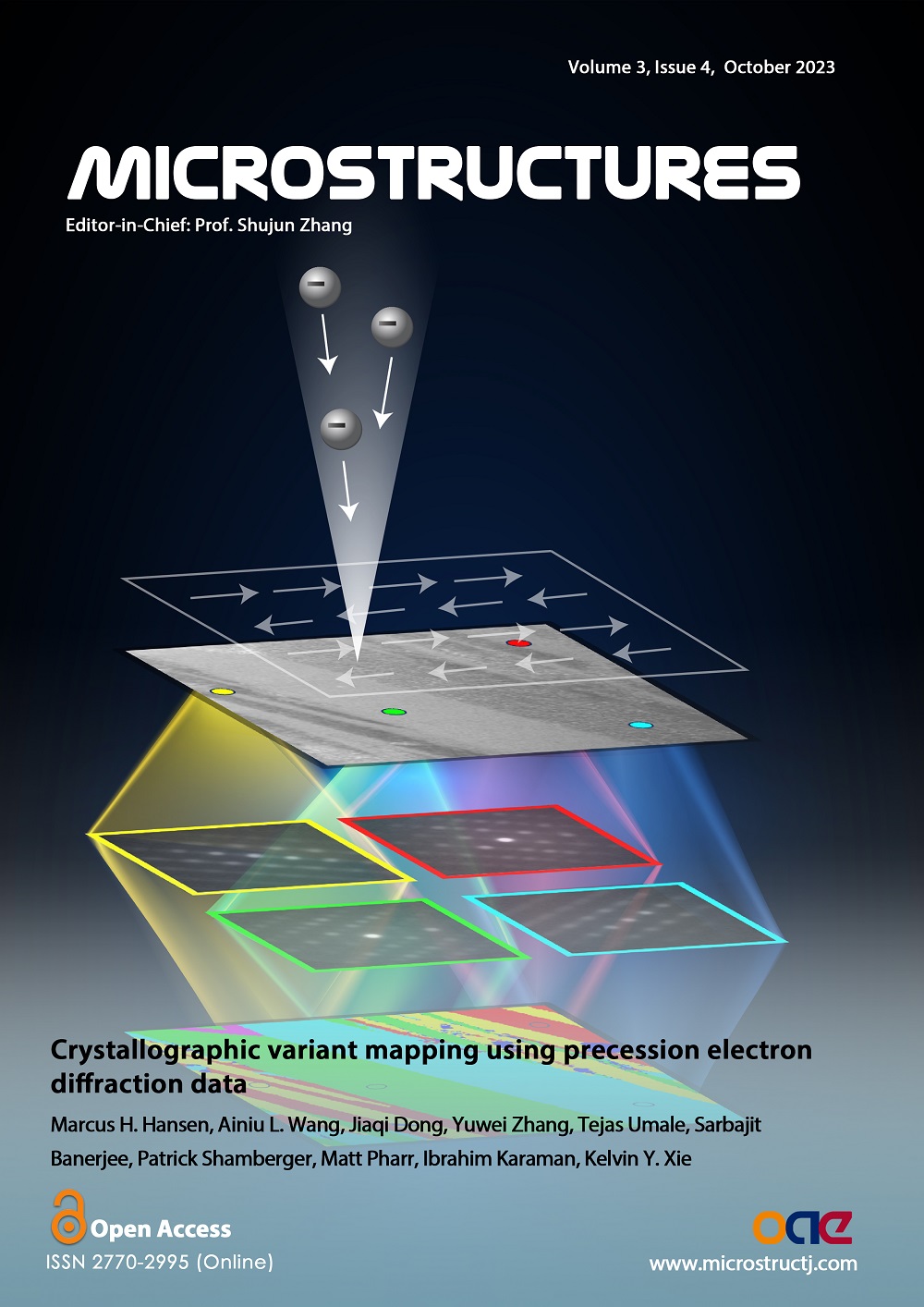Volume 3, Issue 4 (2023) – 20 articles
Cover Picture: In this work, we developed three methods to map crystallographic variants of samples at the nanoscale by analyzing precession electron diffraction data using a high-temperature shape memory alloy and a VO2 thin film on sapphire as the model systems. The three methods are (I) a user-selecting-reference pattern approach, (II) an algorithm-selecting-reference-pattern approach, and (III) a k-means approach. In the first two approaches, Euclidean distance, Cosine, and Structural Similarity (SSIM) algorithms were assessed for the diffraction pattern similarity quantification. We demonstrated that the Euclidean distance and SSIM methods outperform the Cosine algorithm. We further revealed that the random noise in the diffraction data can dramatically affect similarity quantification. Denoising processes could improve the crystallographic mapping quality. With the three methods mentioned above, we were able to map the crystallographic variants in different materials systems, thus enabling fast variant number quantification and clear variant distribution visualization. The advantages and disadvantages of each approach are also discussed. We expect these methods to benefit researchers who work on martensitic materials, in which the variant information is critical to understand their properties and functionalities.
view this paper
Read Online Viewed:
Download This Issue Viewed:






